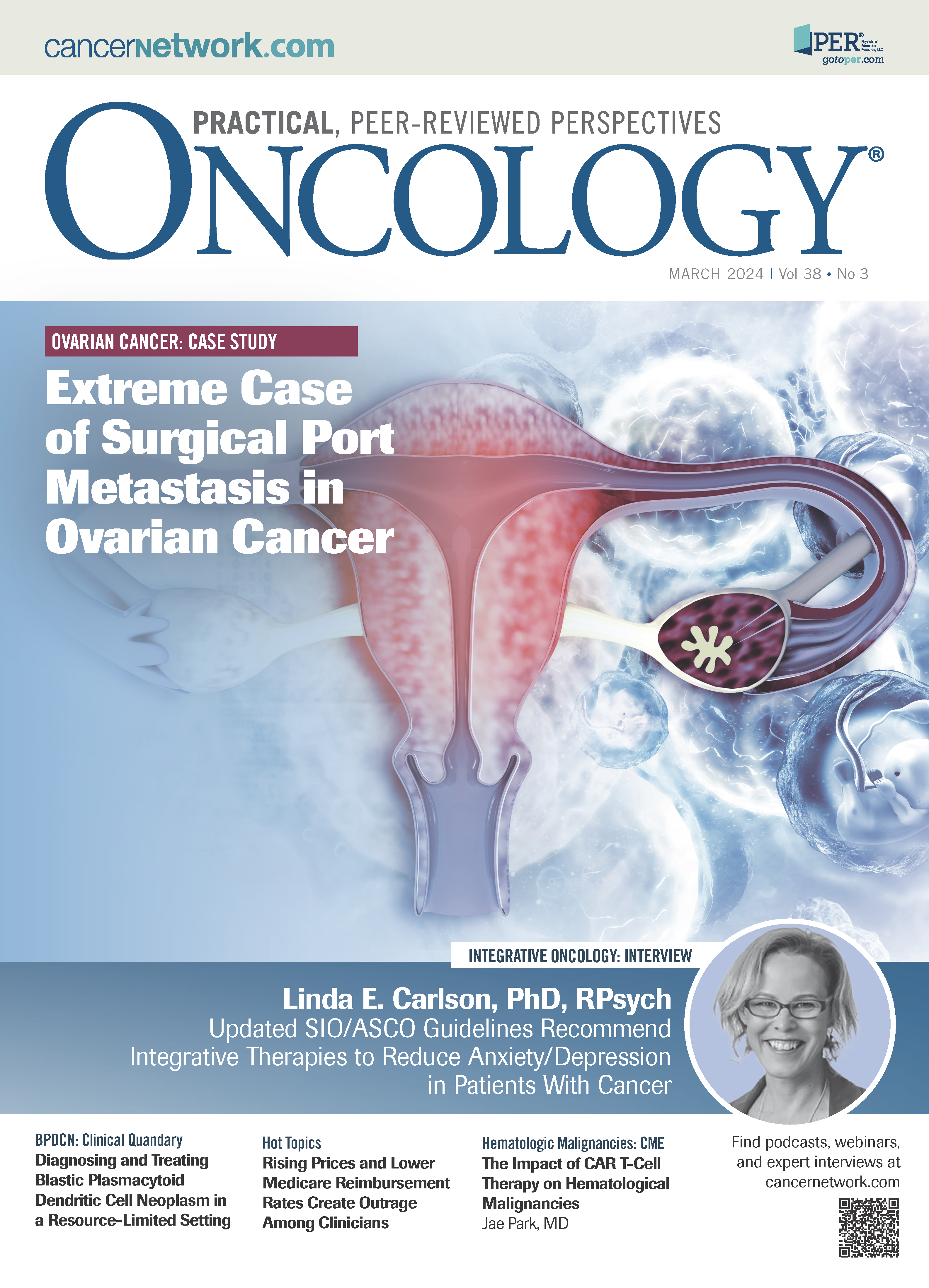Rising Prices and Lower Medicare Reimbursement Rates Create Outrage Among Clinicians
In a recent Hot Topics article, reimbursement rates for Medicare physicians are discussed, and how it will impact their practice.
In a recent Hot Topics article, reimbursement rates for Medicare physicians are discussed, and how it will impact their practice.

Physician recruitment and retention have become a crisis. This crisis is borne of physician discontent and demoralization, which are especially high in the wake of the COVID-19 pandemic. Educational debt, the long training pipeline, and professional demands have made physician “burnout” a hot topic.
Releasing the final rules for 2024, the Centers for Medicare & Medicaid Services has imposed a 3.37% cut to the reimbursement rates for Medicare physicians. When adjusted for inflation, Medicare physician payments have decreased by 26% since 2001.1 From 2020 to 2023, during and after the pandemic, the Medicare conversion factor decreased by 5.96%. The effect of this decrease in the Medicare conversion factor is compounded by an increased inflation rate since 2021.
The US inflation rate reflects the increase in prices compared with the prior year. Inflation increased by 7.0% in 2021 and 6.5% in 2022, and was at 3.4% in 2023, representing a cumulative inflation rate of about 14% since 2021.2-5 Although the inflation rate has fallen from its high in 2021 and 2022, consumer and producer prices have not decreased to their
prepandemic levels. In 2023, it took $1.14 to buy what $1.00 could purchase in 2021.
Although Medicare physician reimbursement continues to be cut, national health care expenditure (NHE) continues to burgeon. Before the pandemic, NHE increased from $1.365 trillion in 2000 to $2.029 trillion in 2005 to $3.795 trillion in 2019, representing 13.3%, 15.6%, and 17.7% of the gross domestic product (GDP), respectively.6
At the height of the pandemic in 2020 and 2021, health care expenditures increased to $3.9 trillion and $4.0 trillion, respectively, and accounted for 18.8% and 17.4% of the GDP, respectively.7,8 In 2022 the NHE slowed, increasing only by 3.8%, and accounting for 17.2% of GDP.9
Part of this decline in NHE during postpandemic 2022 involved less health care utilization, reduced temporary federal government support, and an increase in GDP.10 Less health care utilization represented not only the decline in COVID-19 care and hospitalizations but also the continued delay in the administration of routine health care. During the height of the pandemic in 2020, physician and clinical expenditures grew by 6.6%; after the introduction of the COVID-19 vaccine in 2021, these expenditures decreased by 5.6% to $864.6 billion.11
In this time of record federal spending and a debt of more than $34 trillion, cuts in the Medicare conversion factor will not balance the federal budget becauseMedicare physician services comprise only 14.9% of the total NHE.12 Hospital care represents 31.1%, clinical services 5.4%, and prescription drugs 8.9% of the NHE. The Institute for Clinical and Economic Review identified 10 high-expenditure drugs that had “substantial 2022 net price increases” that “were not supported by new clinical evidence” for 8 of the 10 medications.13 Most of these medications are used in oncology.
Compared with an 8.4% growth in 2021 during the pandemic, Medicare expenditures grew at a rate of 4.8% in 2022. This slower growth in Medicare expenditures is attributable to (1) lower rates of emergent care among Medicare fee-for-service beneficiaries, and (2) phased-in sequestration-based payment rate cuts of 1% from April to June 2022 and 2% per year from July 2022 onward; in 2021, due to the pandemic, these rate cuts were suspended. Despite these physician rate cuts, Medicare expenditures for 2023 are projected to exceed $1 trillion and increase by an average of 7.8% from 2025 to 2031. Growth in Medicare spending is expected to slow in 2030 as (1) Medicare Advantage payments and hospital costs among fee-for-service beneficiaries decline; (2) provisions within the Inflation Reduction Act of 2022 are enacted; and (3) the last of the baby boomers enroll in Medicare in 2029.14
In 2020, more than 3600 US health care workers died from COVID-19. The median age of death from COVID-19 among patients was 78 years but was 59 years for health care workers. From March 2020 to December 2021, there were 622 additional deaths among physicians. Nurses and support staff members, who had greater patient contact, died in far higher numbers than physicians based on relative numbers and extent of patient interactions.15,16 Like first responders, health care workers assumed these risks for themselves and their families based on their ethical commitment
to patients.
Although first responders and health care providers were lauded during the pandemic, the continued cuts in Medicare reimbursement reflect how little their selfless service is valued. The only logical conclusion is that the federal government is counting on physicians’ ethics regarding care of Medicare patients despite the ongoing reimbursement cuts. If physicians limit the number of Medicare patients in their practice due to fiscal restraints, physicians will be blamed. As a bonus, with mounting physician shortages, health care costs will decline as Medicare patients wait longer to see a physician.
Every budget reflects priorities. The federal budget, especially as it concerns provisions made during the sequestration of 2013 and the Inflation Reduction Act of 2022, continues to consider health care workers and Medicare patients as a low priority. In this election year, the calls to reverse cuts in Medicare reimbursement continue to be ignored by the federal government. Given the excess risks assumed during the pandemic, no wonder physician burnout is rampant.
There is an old adage in politics: “If you want less of something, cut its funding or tax it.” What is the message to physicians and Medicare patients? Perhaps the nearly 1 million active physicians in the United States should demand that every bureaucrat be placed on the same pay-cut schedule as physicians treating patients
on Medicare.
Affiliations
1Adjunct Professor; School of Public Health; Department of Environmental and Occupational Health; Texas A&M University,
2Assistant Professor; Institute for Bioscience and Technology; Texas A&M University
References
- History of Medicare conversion factors. American Medical Association. Accessed November 16, 2023. https://shorturl.at/cnT13
- Inflation, consumer prices for the United States. FRED. Federal Reserve Bank of St Louis. Updated December 19, 2023. Accessed November 16, 2023. https://shorturl.at/wCIKO
- World Bank, Inflation, consumer prices for the United States [FPCPITOTLZGUSA], retrieved from FRED, Federal Reserve Bank of St. Louis; https://fred.stlouisfed.org/series/FPCPITOTLZGUSA, January 26, 2024. Accessed November 16, 2023. https://shorturl.at/ktHP0
- Winters M, Cortés G.These 5 charts show how much 2 years of inflation have really cost you.April 14 2023. Make it.CNBC. Accessed January 27, 2024.https://www.cnbc.com/2023/04/14/charts-how-much-inflation-increased-since-2021.html
- Webster I.CPI inflation calculator.Accessed January 27, 2024.https://www.in2013dollars.com/us/inflation/2021?amount=1
- Table HExpGDP. Gross domestic product, national health expenditures, per capita amounts, percent distribution, and average annual percent change: United States, selected years 1960- 2019. CDC. Accessed November 16, 2023. https://shorturl.at/cmGX8
- US health care coverage and spending. Congressional Research Service. Updated April 1, 2022. Accessed November 16, 2023. https://shorturl.at/dkKS8
- US health care coverage and spending. Congressional Research Service. Updated February 6, 2023. Accessed November 16, 2023. https://rb.gy/sm94az
- Health sector economic indicators: insights from monthly national health spending data through December 2022. Altarum. February 22, 2023. Accessed November 16, 2023. https://rb.gy/vugt9h
- Rhyan C, Miller G. An early look at what drove 2022’s health care spending slowdown. Health Affairs. June 6, 2023. Accessed November 16, 2023.https://www.healthaffairs.org/content/forefront/early-look-drove-2022-s-health-care-spending-slowdown
- NHE fact sheet. Centers for Medicare & Medicaid Services. Updated December 13, 2023. Accessed November 16, 2023. https://rb.gy/au2h3t
- Trends in health care spending. American Medical Association. Updated March 20, 2023. Accessed November 16, 2023. https://rb.gy/osqshc
- Unsupported price increases occurring in 2022. Institute for Clinical and Economic Review. Accessed December 11, 2023. https://rb.gy/09qqlg
- National health expenditure projections 2022-2031: forecast summary. Centers for Medicare & Medicaid Services. Accessed December 11, 2023. https://go.cms.gov/3HlzyvI
- 3607 US healthcare worker deaths. Guardian. Accessed November 16, 2023. https://bit.ly/48CodUi
- Kiang MV, Carlasare LE, Thadaney Israni S, Norcini JJ, Zaman JAB, Bibbins-Domingo K. Excess mortality among US physicians during the COVID-19 pandemic. JAMA Intern Med. 2023;183(4):374-376. doi:10.1001/jamainternmed.2022.6308
